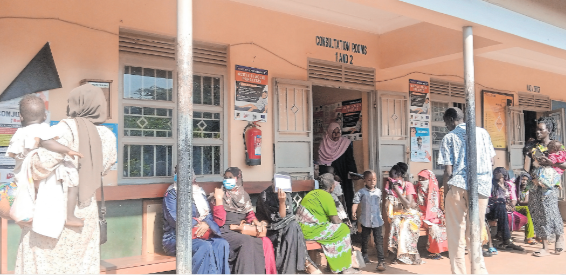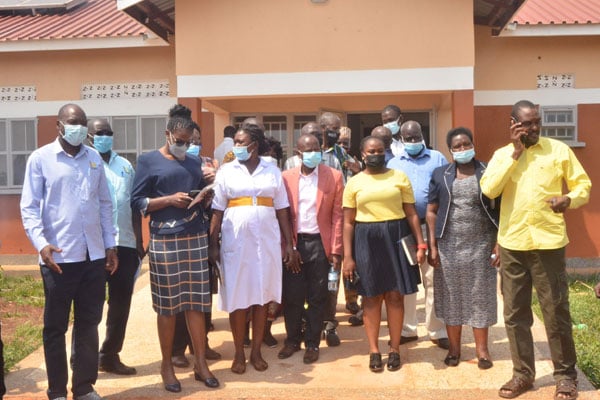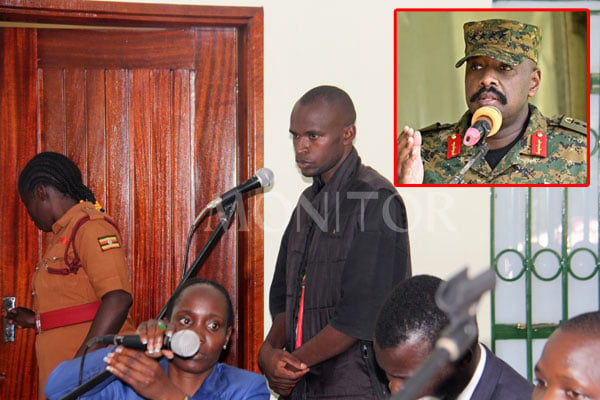Panyadoli Health Centre: A lifeline for Ugandans and refugees amidst struggles

Service seekers wait to see a doctor at Panyadoli Health Centre IV, Kiryandongo District, on September 18, 2024. PHOTO | BILL OKETCH
What you need to know:
- The health centre’s dedicated staff, who often work without adequate medicines and supplies, attend to an estimated 400 patients daily.
Children cry as women, the elderly, and adolescents sit at Panyadoli Health Centre IV, waiting patiently for care.
This government-run facility in Kiryandongo Refugee Settlement in northern Uganda's Bweyale Town Council, serves as a crucial healthcare hub for both locals and refugees from across Africa.
Despite its limited resources, understaffing, and aging infrastructure, Panyadoli has become a lifeline for hundreds of thousands of people.
The health centre’s dedicated staff, who often work without adequate medicines and supplies, attend to an estimated 400 patients daily.
With a catchment population of about 186,000, including 124,000 refugees from South Sudan, Sudan, Kenya, DR Congo, Ethiopia, Burundi, and Eritrea, the centre also serves 62,000 Ugandans.
“On a daily basis, we see between 400 and 500 patients at the Out-Patient Department (OPD), most of whom are children and women,” Dr Alex Paul Tezita, the health centre’s in-charge, says.
He highlights the challenges of managing such large numbers with limited staff.
“We only have two doctors, and one of them is also the administrator. So, time is divided between clinical and administrative duties,” he adds.
The overwhelming demand means patients often wait longer to be seen by a doctor.
The centre handles an average of 80 deliveries weekly, with nine midwives spread across various maternity services. Yet staffing remains a significant issue, with only 72 health workers out of the required 136.
“So, currently, instead of the eight-hour shift, we have put people on 12-hour shifts so that we are able to cover up. We can’t put one nurse on duty. We are now putting two, two,” Dr Tezita explains.
Common illnesses
Malaria, respiratory tract infections, and skin diseases dominate the disease burden at Panyadoli. However, due to the refugee influx, there has been a rise in non-communicable diseases (NCDs) such as diabetes, hypertension, asthma, cancer, and mental health issues.
“Mental illness accounts for 25 percent of the disease burden, particularly epilepsy, depression, post-traumatic stress disorder, and anxiety,” Dr Tezita, says, noting that these cases are more prevalent among youth than adults.
To address this, the centre has set up a mental health team and an NCD clinic. However, treating complex conditions remains a challenge.
“We refer heart conditions to Mulago Heart Institute and cancer patients to Mulago Hospital because we lack the specialised equipment and care for such cases,” Dr Tezita adds.
Language barrier
Another hurdle is the language barrier. Most patients do not speak English or Kiswahili, complicating communication. To tackle this, 12 volunteer interpreters from the refugee community have been recruited, and a real-time language interpretation app has been installed on phones.
“The app offers both audio and text translation, making communication easier,” Dr Tezita explains.
Despite these challenges, Panyadoli receives support from various partners, including the Ministry of Health, UNHCR, UNICEF, and Red Cross.
“We are getting various medicines from various partners. The Ministry of Health through National Medical Stores (NMS) supplies us, UNHCR does the supply of medicines and health supplies, and we also get supplies from partners: International Rescue Committee (IRC) and Red Cross,” he says.
Refugees also voice concerns about service gaps. Ibrahim Omer Fatimalzahra, a Village Health Team member, laments the slow referral process for chronic illness patients.
“The major challenge facing us Sudanese refugees is the issue of referral. When people with chronic illnesses visit the facility, they don’t get help and they are referred to either Gulu, Kiryandongo or Kampala and the referral takes a very long time. Sometimes it takes about two or even four months or they may not even refer you,” she says.
Mohammed Musa Zolaikha, another Sudanese refugee, mentions transport challenges.
“There are only two ambulances, and they often don’t respond. We end up using boda bodas, which we’re not accustomed to,” he says.
Mubarak Gamat Hafiza, another refugee, however, says patients access services free of charge at the health centre.
“Ugandans are wonderful people. They are very welcoming, but the only challenge is periodic stock out of essential commodities at health centres,” she says.
Dr Tezita acknowledges that the centre sometimes experiences stockouts of essential medicines. He believes upgrading Panyadoli to a hospital would enhance service delivery, bringing in more resources, supplies, and staff.
“If the upgrade isn’t possible, we need to lobby for more health workers across the board,” he suggests.
Responses
Getting a comment from Dr Diana Atwine, the Permanent Secretary, Ministry of Health, was fruitless by press time as she did not respond to our repeated calls nor return our message to her known mobile number.
Mr Emmanuel Ainebyoona, the Health ministry’s spokesperson, earlier recommended that her boss was better placed to give the official position of the Ministry of Health.
In response to the need to recruit more staff, the Chief Administrative Officer of Kiryandongo, Mr Martin Jacan Gwokto, said: “We are going to recruit more personnel if the ban on recruitment is lifted, and the Ministry of Public Service clears us to recruit with available wage.”
Assistance
Mr Bruno Rotival, the European Union Humanitarian Aid Uganda Head, said the humanitarian office of the European Commission (ECHO) has a partnership with UNHCR and other partners to provide humanitarian assistance to refugees in all the settlements throughout Uganda.
“We are doing everything possible for this assistance to be channeled through national partners to the very maximum because we believe this assistance is something that is necessary,” he says.
“Over the past years, we allocated around €30 million (about Shs123 trillion) per year to the humanitarian situation in the settlement to provide assistance to the refugees that have been here at least for a while as well as to secure assistance to the many refugees that are coming on a daily basis to Uganda,” he added.
With an average of over 1,000 new refugee arrivals weekly, the strain on Panyadoli is immense. As of August 31, 2024, there were 124,790 refugees and asylum seekers in Kiryandongo, according to data from the Office of the Prime Minister and UNHCR.




